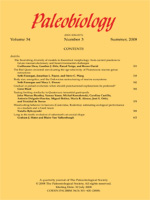The effects of specialization on subsequent morphological evolution are poorly understood. Specialization has been implicated in both adaptive radiations that result from key innovations and evolutionary “dead ends,” where specialized characteristics appear to limit subsequent evolutionary options. Despite much theoretical debate, however, empirical studies remain infrequent. In this paper, we use sister-group comparisons to evaluate the effect of morphological specialization to a particular ecological niche, hypercarnivory, on subsequent taxonomic and morphological diversity. Six sets of sister groups are identified in which one clade exhibits hypercarnivorous characteristics and the sister clade does not. Comparison results are summed across the categories “hypercarnivore” and “sister group.” We also evaluate whether increasing degrees of specialization are correlated with decreasing phenotypic variation. Results presented here indicate that specialization to hypercarnivory has no effect on taxonomic diversity, but a strong effect on subsequent morphological diversity related to the jaws and dentition, and that increasing specialization does not correlate with morphological diversity except in the most specialized saber-toothed taxa, which exhibit higher variance than less specialized morphs, possibly due to selection on other characteristics.
How to translate text using browser tools
1 January 2004
Evolution of hypercarnivory: the effect of specialization on morphological and taxonomic diversity
Jill A. Holliday,
Scott J. Steppan
ACCESS THE FULL ARTICLE

Paleobiology
Vol. 30 • No. 1
January 2004
Vol. 30 • No. 1
January 2004




